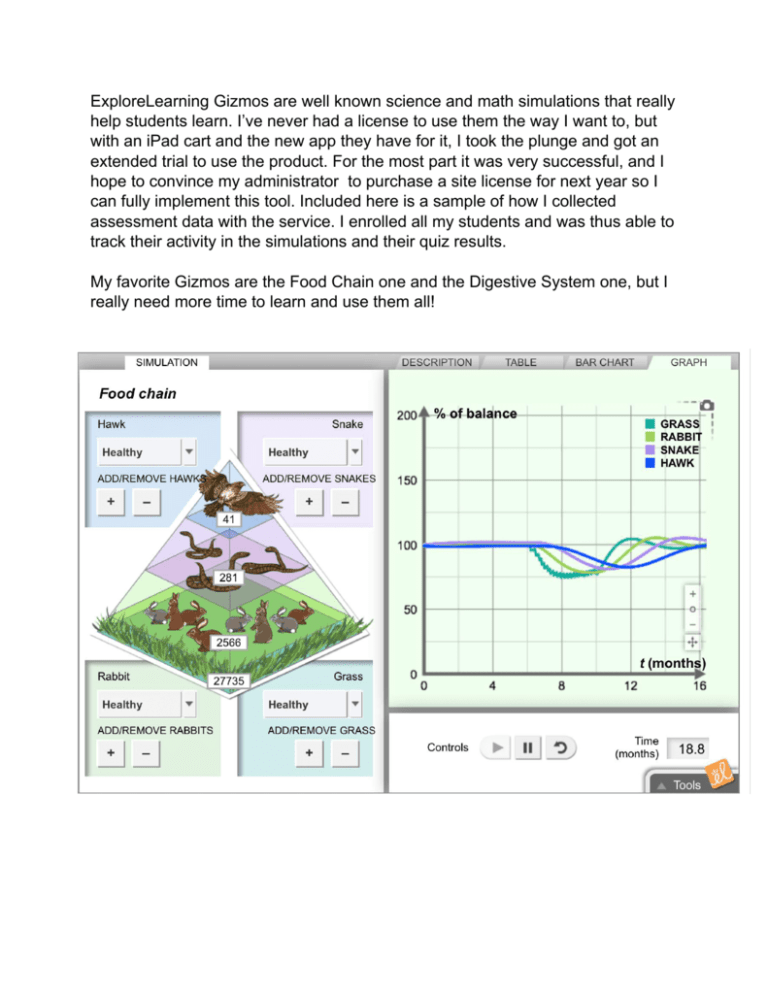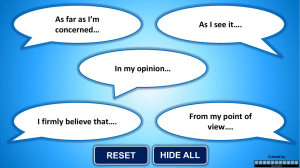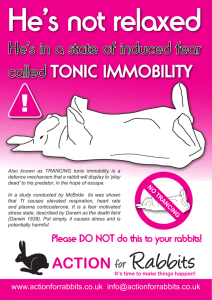
ExploreLearning Gizmos are well known science and math simulations that really
help students learn. I’ve never had a license to use them the way I want to, but
with an iPad cart and the new app they have for it, I took the plunge and got an
extended trial to use the product. For the most part it was very successful, and I
hope to convince my administrator to purchase a site license for next year so I
can fully implement this tool. Included here is a sample of how I collected
assessment data with the service. I enrolled all my students and was thus able to
track their activity in the simulations and their quiz results.
My favorite Gizmos are the Food Chain one and the Digestive System one, but I
really need more time to learn and use them all!
ExploreLearning
Assessment Results » Food Chain
CLASS:
Per 1
Per 2
Per 3
Per 5
Per 6
Per X
Student
1
2
3
4
5
Total
Reset:
(All)
Branim, Kaleb
A
C
A
D
A
80% (4/5)
reset
Chang, Asia
D
C
D
D
A
80% (4/5)
reset
Cross, Sophie
D
C
A
D
A 100% (5/5)
reset
Dad, Arun
D
C
A
B
A
80% (4/5)
reset
Gragnani, Jay
D
C
A
D
A 100% (5/5)
reset
Graham , Ben
D
C
A
D
A 100% (5/5)
reset
Kim, Ellie
D
C
A
D
A 100% (5/5)
reset
Kleiner, Iliana
D
C
A
D
A 100% (5/5)
reset
Kyuregyan, Ani
D
C
A
D
A 100% (5/5)
reset
liberzon, gaby
D
C
A
D
A 100% (5/5)
reset
Manukyan, David
D
C
A
C
A
80% (4/5)
reset
Marcus, Saffron
D
C
A
D
A 100% (5/5)
reset
Matich, Brett
D
C
A
A
A
80% (4/5)
reset
McNabb, Aidan
D
C
A
D
A 100% (5/5)
reset
McRitchie, Jack
D
C
A
B
A
80% (4/5)
reset
Medrano , Jasmin
D
C
A
D
A 100% (5/5)
reset
Novikov, Kate
D
B
A
D
A
reset
Ginsburg , Benjamin
Lavini, Jada
Pinhassi, Tzlil
80% (4/5)
Price , Niko
D
C
A
B
A
80% (4/5)
reset
Rich-Takayama, Hugo
D
C
A
D
A 100% (5/5)
reset
Semenov, Nicholas
D
C
D
D
A
80% (4/5)
reset
Shahbaghyan, Emma
D
C
A
D
A 100% (5/5)
reset
Suh, Rachel
D
C
A
D
A 100% (5/5)
reset
Sverdlov, Marc
D
C
A
A
A
80% (4/5)
reset
Talehakimi, Parsa
D
C
D
B
A
60% (3/5)
reset
Vasilescu, Julian
D
C
D
D
A
80% (4/5)
reset
Vaynshteyn , Tony Vaynshteyn
D
C
A
A
A
80% (4/5)
reset
Weizman, Tali
D
C
A
B
A
80% (4/5)
reset
Yu, Derek
D
C
A
C
A
80% (4/5)
reset
Rocha, Irianna
SHIN, JOSEPH
Voldiner, Liora
Yu, Jean
Reset the Assessment Results for all checked students above:
1. If a disease strikes the snake population in the food chain shown, what will be the initial effect on the
populations of hawks and rabbits?
A. The populations of hawks and rabbits will decrease.
B. The populations of hawks and rabbits will increase.
C. The population of hawks will increase. The population of rabbits will decrease.
D. The population of hawks will decrease. The population of rabbits will increase.
Correct Answer: D — The population of hawks will decrease. The population of rabbits will increase.
Explanation: When the population of one species decreases suddenly, as when a disease strikes the
population, the populations higher in the food chain also decrease due to a loss in food supply. In this
case the hawk population decreases because there are suddenly fewer snakes to eat. The species below
the diseased species in the food chain increase because there are fewer predators. In this case, the rabbit
population increases because there are fewer snakes to eat them.
Back to Top
2. In the stable food chain shown below, what would you expect to happen initially if you were to
suddenly double the population of rabbits?
A. The populations of the other three species would also increase.
B. The populations of the other three species would decrease.
C. The grass population would decrease. The snake population and hawk population would
increase.
D. The grass population and hawk population would decrease. The snake population would
increase.
Correct Answer: C — The grass population would decrease. The snake population and hawk
population would increase.
Explanation: When the population of one species in a food chain increases, the populations of the
species that are lower in the food chain decrease and the populations of the species that are higher in
the food chain increase. The grass population decreases because twice as many rabbits are feeding on
it. The snake population would increase initially because of the increase in its food supply—the rabbits.
The hawk population would also increase as the population of its food supply—the snakes—increases.
Back to Top
3. What event within the food chain might lead to the graph shown below?
A. A disease in the population of rabbits.
B. A disease in the population of snakes.
C. A disease in the population of hawks.
D. Its impossible to tell which of the above occurred.
Correct Answer: A — A disease in the population of rabbits.
Explanation: Because the four populations all started out at their ideal values, it is likely that these
changes were the result of a disease. Because the rabbit population was the first to decrease, it is also
likely that the disease occurred in the rabbit population. The snake population then decreased because
its food supply—the rabbits—decreased. Once the snake population decreased, the hawk population
also decreased for the same reason. The grass population gradually increased as the number of rabbits
feeding on it decreased.
Back to Top
4. What most likely caused the rabbit population to decrease over the first time unit shown in the
following graph?
A. A disease in the population of rabbits
B. A decreasing population of grasses
C. An increasing population of hawks
D. A higher-than-ideal population of snakes
Correct Answer: D — A higher-than-ideal population of snakes
Explanation: You can see from the graph that the initial population of snakes is higher than ideal. This
unusually large number of snakes ate more rabbits and caused their numbers to decrease, at least
temporarily. The increase in the number of hawks was also the result of a larger than average number
of snakes, their primary food source. The fact that all populations returned to their ideals shows you
that there were no diseases.
Back to Top
5. Trapping has severely reduced the population of rabbits in an ecosystem, as shown in the bar graph
below. What is the most likely effect this will have on other organisms?
A. The snake population will decrease rapidly and the grass population will increase rapidly.
B. The hawk population will increase rapidly and the rabbit population will decrease rapidly.
C. The grass population will decrease rapidly, and the snake population will increase rapidly.
D. The grass, rabbit, snake, and hawk populations will all decrease rapidly.
Correct Answer: A — The snake population will decrease rapidly and the grass population will
increase rapidly.
Explanation: In this model, the snakes depend on rabbits for food, so a decrease in rabbit population
will cause a decrease in the snake population. Grass is eaten by rabbits, so the decrease in rabbits will
increase the grass population. Assuming the trapping ends, the decrease in snakes and abundance of
grass will allow the rabbit population to recover, and balance will eventually be restored to the
ecosystem.
Back to Top
© 2015 ExploreLearning. All rights reserved. Gizmo and Gizmos are trademarks of ExploreLearning. Please
carefully review the Terms & Conditions of Use (7) and our Privacy Policy (8) before using this site. Your
use of the site indicates your agreement to be bound by the Terms & Conditions of Use.









